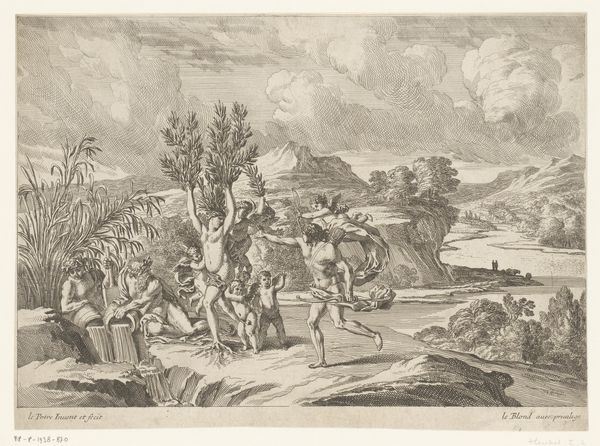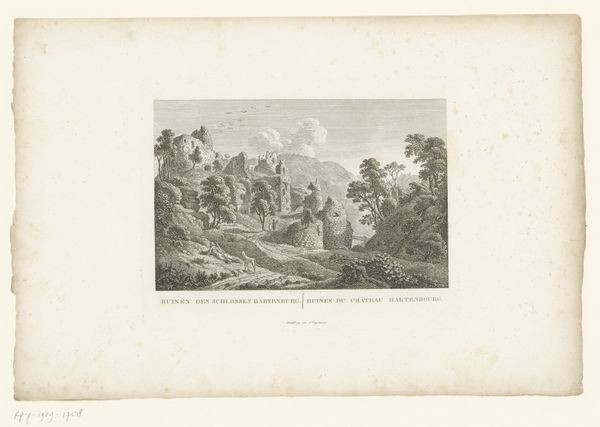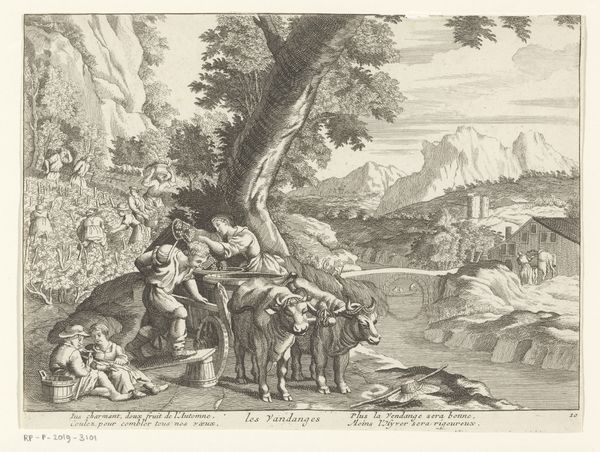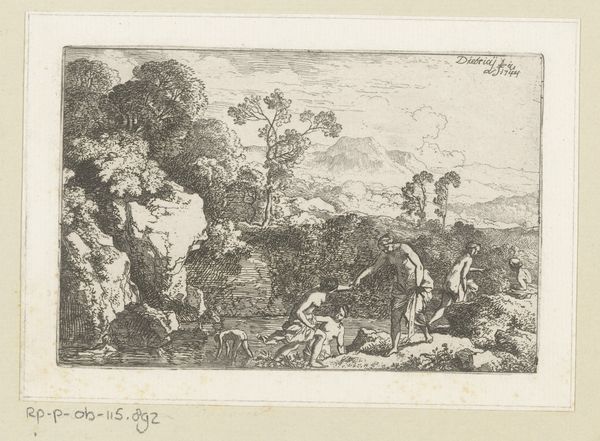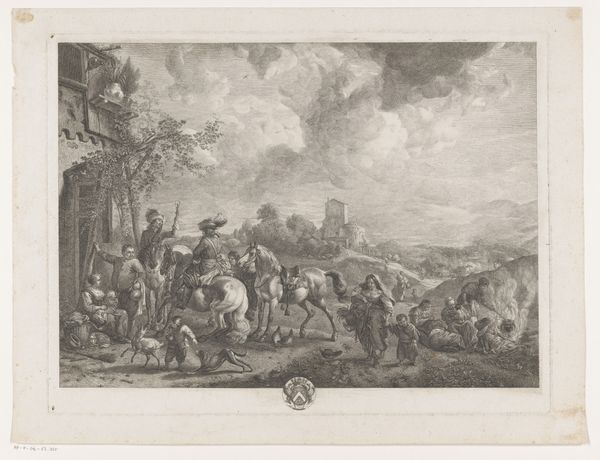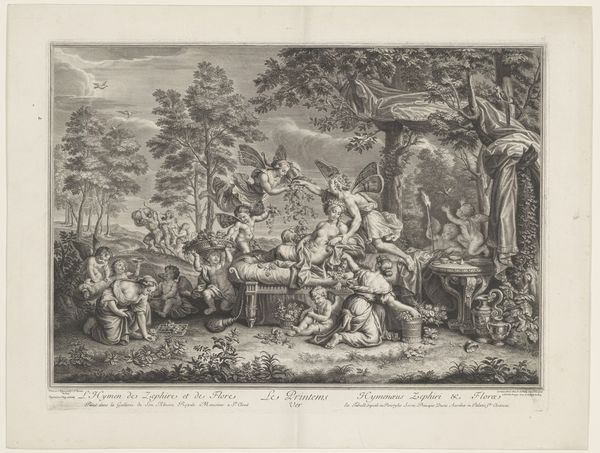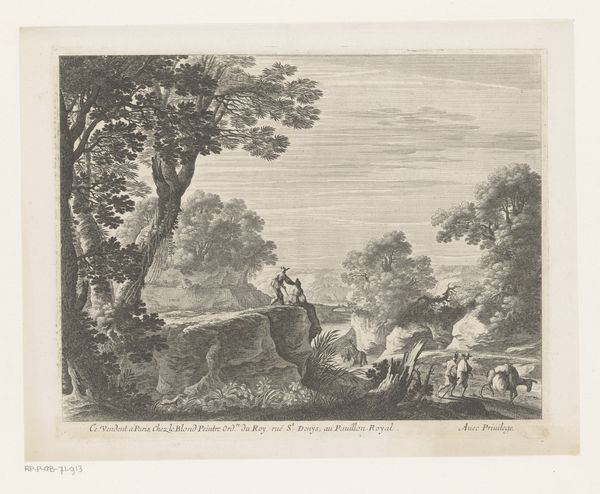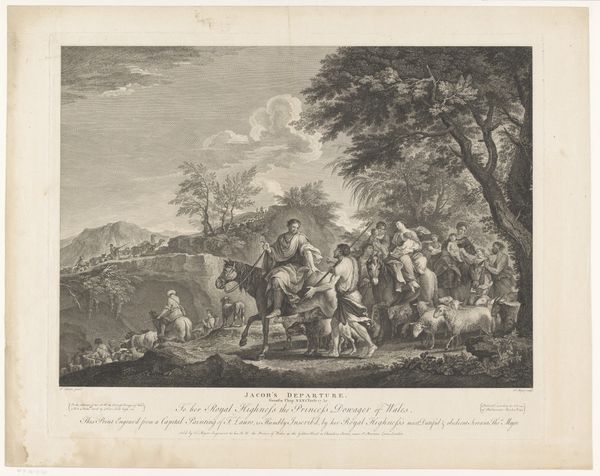
etching
#
baroque
#
etching
#
landscape
#
etching
#
figuration
#
history-painting
Dimensions: height 165 mm, width 212 mm
Copyright: Rijks Museum: Open Domain
Editor: So, this is Jean Lepautre's etching, "The Abduction of Europa," likely made somewhere between 1628 and 1682, currently at the Rijksmuseum. I'm struck by how dramatic the composition is, almost like a stage set with the landscape receding in the background. What do you see in this piece that maybe isn't immediately obvious? Curator: This image is fascinating because it speaks to how mythological narratives were used and circulated in the 17th century. Lepautre, through the medium of etching, made this classical tale accessible to a broader public beyond the elite who commissioned paintings. Notice the setting; it’s not just illustrating a story, it is locating the story in a particular kind of idealized, ordered landscape – what do you make of that? Editor: I guess the setting emphasizes the power and control that the patrons wanted to align with? Almost as if they're taming the chaos of the myth by placing it in such an organized space? Curator: Precisely. The ordered landscape suggests a certain control, and visually associates the patron and broader cultural-political powers with the power of the Gods. Think about where images like this would be seen. Perhaps bound into books, or collected by connoisseurs. So its reproduction and dissemination is part of how cultural values and social status are negotiated. It’s not just about aesthetics; it’s about power, and visual language is its instrument. Editor: That's a totally different lens than how I usually look at art! So, it’s less about what the artist intended, and more about how society uses the artwork to project an image of themselves? Curator: Exactly! The image doesn't exist in a vacuum. Museums, collectors, viewers - we all contribute to the continuing interpretation and the power an image wields. It’s a conversation across time. Editor: That really gives me a lot to think about regarding not only the artist and subject, but also society. Curator: Indeed. Understanding art through a historical and institutional lens reveals its deep connection to power and social dynamics.
Comments
No comments
Be the first to comment and join the conversation on the ultimate creative platform.
